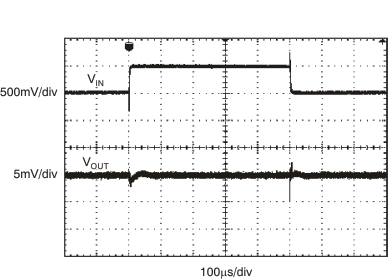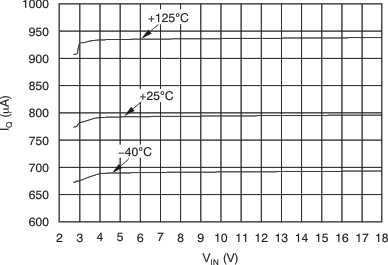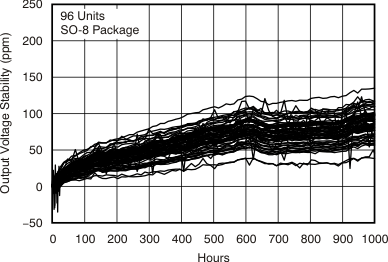-
REF50xxA-Q1 Low-Noise, Very Low Drift, Precision Voltage Reference SBOS456H September 2008 – February 2015 REF5020A-Q1 , REF5025A-Q1 , REF5030A-Q1 , REF5040A-Q1 , REF5045A-Q1 , REF5050A-Q1
PRODUCTION DATA.
-
REF50xxA-Q1 Low-Noise, Very Low Drift, Precision Voltage Reference
- 1 Features
- 2 Applications
- 3 Description
- 4 Simplified Schematic
- 5 Revision History
- 6 Pin Configuration and Functions
- 7 Specifications
- 8 Detailed Description
- 9 Application and Implementation
- 10Power Supply Recommendations
- 11Layout
- 12Device and Documentation Support
- 13Mechanical, Packaging, and Orderable Information
- IMPORTANT NOTICE
Package Options
Mechanical Data (Package|Pins)
- D|8
Thermal pad, mechanical data (Package|Pins)
Orderable Information
REF50xxA-Q1 Low-Noise, Very Low Drift, Precision Voltage Reference
1 Features
- Qualified for Automotive Applications
- Low Temperature Drift
- Standard Grade: 8 ppm/°C (max)
- High Accuracy
- Standard Grade: 0.1% (max)
- Low Noise: 3 μVPP/V
- Excellent Long-Term Stability:
- 5 ppm/1000 hr (typ) after 1000 hours
- High Output Current: ±10 mA
- Temperature Range: –40°C to 125°C
2 Applications
- 16-Bit Data Acquisition Systems
- ATE Equipment
- Industrial Process Control
- Medical Instrumentation
- Optical Control Systems
- Precision Instrumentation
3 Description
The REF50xxA-Q1 family of devices is low-noise, low-drift, very-high precision-voltage reference. These reference devices are capable of both sinking and sourcing, and are very robust with regard to line and load changes.
Excellent temperature drift (3 ppm/°C) and high accuracy (0.05%) are achieved using proprietary design techniques. These features combined with very low noise make the REF50xxA-Q1 family of devices ideal for use in high-precision data acquisition systems.
Each reference voltage is available in a standard-grade versions. The devices are offered in SO-8 packages and are specified from –40°C to 125°C.
Device Information(1)
| PART NUMBER | PACKAGE | OUTPUT VOLTAGE |
|---|---|---|
| REF5020A-Q1 | SOIC (8) | 2.048 V |
| REF5025A-Q1 | 2.5 V | |
| REF5030A-Q1 | 3 V | |
| REF5040A-Q1 | 4.096 V | |
| REF5045A-Q1 | 4.5 V | |
| REF5050A-Q1 | 5 V |
- For all available packages, see the orderable addendum at the end of the data sheet.
4 Simplified Schematic
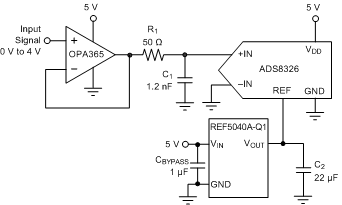
5 Revision History
Changes from G Revision (October 2013) to H Revision
- Added the Pin Configuration and Functions section, Recommended Operating Conditions table, Thermal Information table, Feature Description section, Device Functional Modes section, Application and Implementation section, Power Supply Recommendations section, Layout section, Device and Documentation Support section, and Mechanical, Packaging, and Orderable Information section Go
- Added A-Q1 to the end of the device numbers Go
- Changed the MIN and MAX values for the REF5040 initial accuracy parameter in the Electrical Characteristics table Go
Changes from F Revision (September 2011) to G Revision
- Deleted reference to high grade throughout the documentGo
- Deleted Package/Ordering Information table from datasheetGo
- Deleted references to the MSOP-8 package and High-Grade from the THERMAL HYSTERESIS section of the ELECTRICAL CHARACTERISTICS: ALL DEVICES tableGo
- Deleted references to the MSOP-8 package from the LONG-TERM STABILITY section of the ELECTRICAL CHARACTERISTICS: ALL DEVICES tableGo
- Deleted graphs for MSOP-8 package from TYPICAL CHARACTERISTICS sectionGo
Changes from E Revision (August 2011) to F Revision
- Added REF5045AQDRQ1 HBM ESD rating of 1000 VGo
Changes from D Revision (October, 2010) to E Revision
- Added Thermal Hysteresis parameters and specificationsGo
- Added Long-Term Stability parameters and specificationsGo
- Added Figure 22 through Figure 24Go
- Added Thermal Hysteresis sectionGo
- Revised Noise Performance section; added paragraph with links to applications articlesGo
6 Pin Configuration and Functions
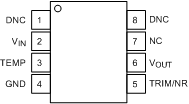
Pin Functions
| PIN | I/O | DESCRIPTION | |
|---|---|---|---|
| NAME | NO. | ||
| DNC | 1 | — | Do not connect. Do not use. |
| 8 | |||
| GND | 4 | — | Ground |
| NC | 7 | — | No internal connection. Do not use. |
| TEMP | 3 | O | Temperature-dependent voltage output |
| TRIM/NR | 5 | I | Trim and noise reduction for ±15-mV output adjustment |
| VIN | 2 | I | Input supply voltage |
| VOUT | 6 | O | Reference voltage output |
7 Specifications
7.1 Absolute Maximum Ratings(1)
| MIN | MAX | UNIT | ||
|---|---|---|---|---|
| Input voltage | 18 | V | ||
| Output short-circuit | 30 | mA | ||
| Operating temperature | –40 | 125 | °C | |
| Junction temperature (TJ max) | 150 | °C | ||
| Storage temperature (Tstg) | –65 | 150 | °C | |
7.2 ESD Ratings
| VALUE | UNIT | |||
|---|---|---|---|---|
| REF5020A-Q1, REF5040A-Q1, AND REF5050A-Q1 | ||||
| V(ESD) | Electrostatic discharge | Human-body model (HBM), per AEC Q100-002(1) | ±500 | V |
| Charged-device model (CDM), per AEC Q100-011 | ±1000 | |||
| Machine Model (MM) | 200 | |||
| REF5030A-Q1 AND REF5045A-Q1 | ||||
| V(ESD) | Electrostatic discharge | Human-body model (HBM), per AEC Q100-002(1) | ±1000 | V |
| Charged-device model (CDM), per AEC Q100-011 | ±1000 | |||
| Machine Model (MM) | 200 | |||
7.3 Recommended Operating Conditions
over operating free-air temperature range (unless otherwise noted)| MIN | MAX | UNIT | ||
|---|---|---|---|---|
| VIN | Supply input voltage | VOUT + 0.2(1) | 18 | V |
7.4 Thermal Information
| THERMAL METRIC(1) | D (SOIC) | UNIT | |
|---|---|---|---|
| 8 PINS | |||
| RθJA | Junction-to-ambient thermal resistance | 107.1 | °C/W |
| RθJC(top) | Junction-to-case (top) thermal resistance | 48.8 | |
| RθJB | Junction-to-board thermal resistance | 48.3 | |
| ψJT | Junction-to-top characterization parameter | 6.8 | |
| ψJB | Junction-to-board characterization parameter | 47.6 | |
7.5 Electrical Characteristics: Per Device
TA = 25°C, ILOAD = 0, CL = 1 μF, VIN = (VOUT + 0.2 V) to 18 V (unless otherwise noted).| PARAMETER | TEST CONDITIONS | MIN | TYP | MAX | UNIT | |
|---|---|---|---|---|---|---|
| REF5020 (VOUT = 2.048 V)(1) | ||||||
| VOUT | Output voltage | 2.7 V < VIN < 18 V | 2.048 | V | ||
| Initial accuracy, standard grade | –0.1% | 0.1% | ||||
| Output voltage noise | f = 0.1 Hz to 10 Hz | 6 | μVPP | |||
| REF5025 (VOUT = 2.5 V) | ||||||
| VOUT | Output voltage | 2.5 | V | |||
| Initial accuracy, standard grade | –0.1% | 0.1% | ||||
| Output Voltage Noise | f = 0.1 Hz to 10 Hz | 7.5 | μVPP | |||
| REF5030 (VOUT = 3 V) | ||||||
| VOUT | Output voltage | 3 | V | |||
| Initial accuracy, standard grade | –0.1% | 0.1% | ||||
| Output voltage noise | f = 0.1 Hz to 10 Hz | 9 | μVPP | |||
| REF5040 (VOUT = 4.096 V) | ||||||
| VOUT | Output voltage | 4.096 | V | |||
| Initial accuracy, standard grade | –0.1% | 0.1% | ||||
| Output voltage noise | f = 0.1 Hz to 10 Hz | 12 | μVPP | |||
| REF5045 (VOUT = 4.5 V) | ||||||
| VOUT | Output voltage | 4.5 | V | |||
| Initial accuracy, standard grade | –0.1% | 0.1% | ||||
| Output voltage noise | f = 0.1 Hz to 10 Hz | 13.5 | μVPP | |||
| REF5050 (VOUT = 5 V) | ||||||
| VOUT | Output voltage | 5 | V | |||
| Initial accuracy, standard grade | –0.1% | 0.1% | ||||
| Output voltage noise | f = 0.1 Hz to 10 Hz | 15 | μVPP | |||
7.6 Electrical Characteristics: All Devices
Boldface limits apply over the specified temperature range, TA = –40°C to 125°C.TA = 25°C, ILOAD = 0, CL = 1 μF, VIN = (VOUT + 0.2 V) to 18 V (unless otherwise noted).
| PARAMETER | TEST CONDITIONS | MIN | TYP | MAX | UNIT | ||
|---|---|---|---|---|---|---|---|
| dVOUT/dT | Output voltage temperature drift, standard grade | Over temperature | 3 | 8 | ppm/°C | ||
| dVOUT/dVIN | Line regulation | REF5020 only(1) | VIN = 2.7 V to 18 V | 0.1 | 1 | ppm/V | |
| All other devices | VIN = VOUT + 0.2 V | 0.1 | 1 | ppm/V | |||
| All devices | Over temperature | 0.2 | 1 | ppm/V | |||
| dVOUT/dILOAD | Load regulation | REF5020 only | –10 mA < ILOAD < +10 mA, VIN = 3 V | 20 | 30 | ppm/mA | |
| All other devices | –10 mA < ILOAD < +10 mA, VIN = VOUT + 0.75 V |
20 | 30 | ppm/mA | |||
| All devices | Over temperature, –10 mA < ILOAD < +10 mA |
50 | ppm/mA | ||||
| ISC | Short-circuit current | VOUT = 0 V | 25 | mA | |||
| Thermal hysteresis, (2) standard grade | Cycle 1 | 10 | ppm | ||||
| Cycle 2 | 5 | ppm | |||||
| Long-Term Stability | 0 to 1000 hours | 90 | ppm/1000 hr | ||||
| 1000 to 2000 hours | 10 | ppm/1000 hr | |||||
| Voltage output, TEMP pin | At TA = 25°C | 575 | mV | ||||
| Temperature sensitivity , TEMP pin | Over temperature | 2.64 | mV/°C | ||||
| Turn-on settling time | To 0.1% with CL = 1 μF | 200 | μs | ||||
| VS | Power supply voltage | See Note (1) | VOUT + 0.2(1) | 18 | V | ||
| Power supply, quiescent current | 0.8 | 1 | mA | ||||
| Over temperature | 1.2 | mA | |||||
| TEMPERATURE RANGE | |||||||
| Specified range | –40 | 125 | °C | ||||
| Operating range | –55 | 125 | °C | ||||
| Thermal resistance | 150 | °C/W | |||||
7.7 Typical Characteristics
TA = 25°C, ILOAD = 0, VS = VOUT + 0.2 V (unless otherwise noted). For VOUT ≤ 2.5 V, the minimum supply voltage is 2.7 V.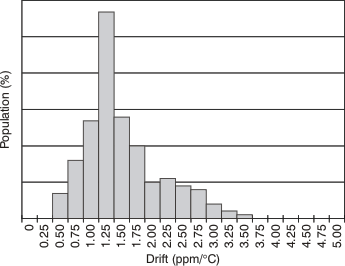
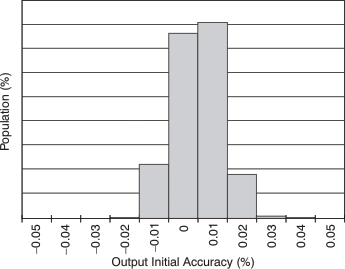
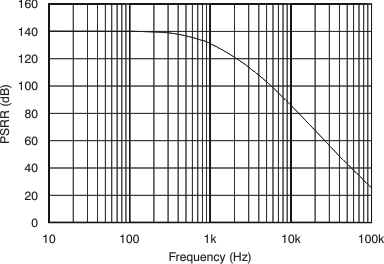
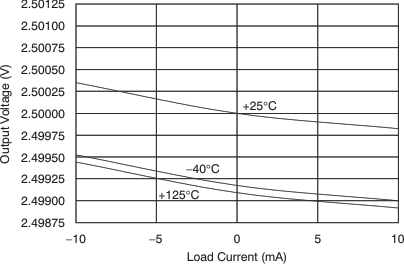

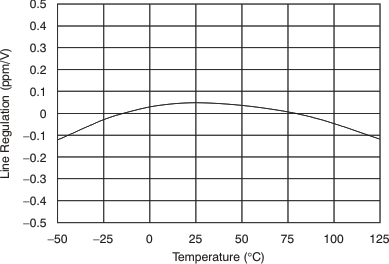
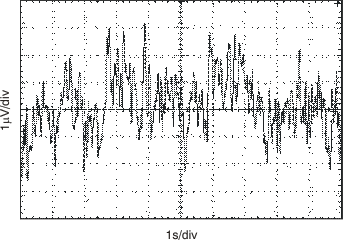
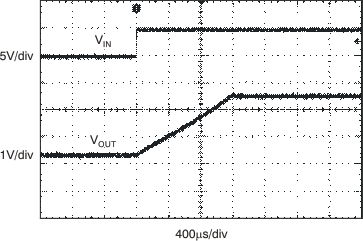
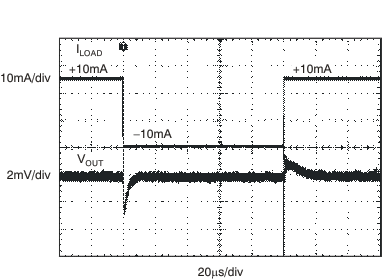
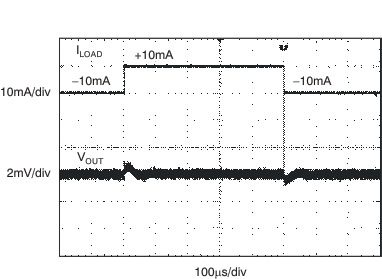
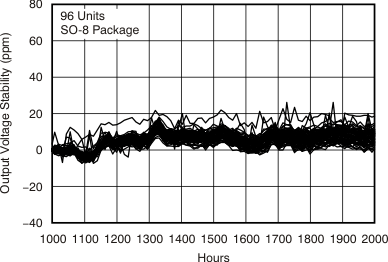
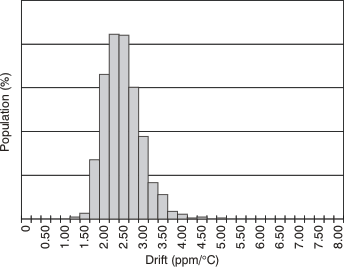
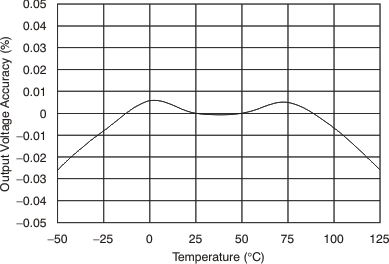
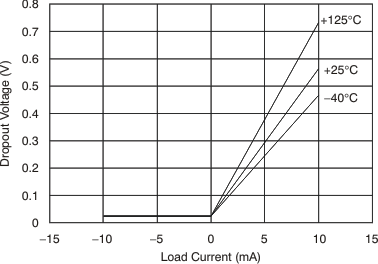
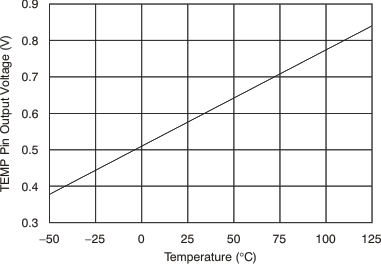
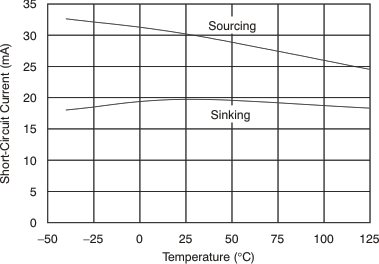
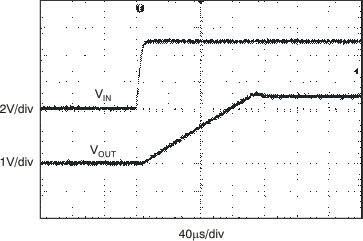
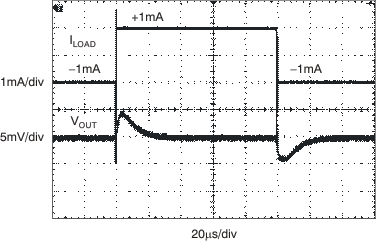
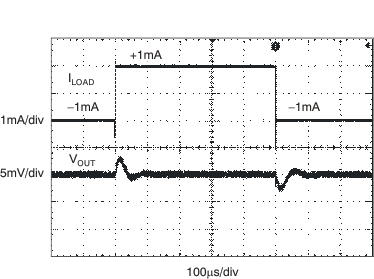
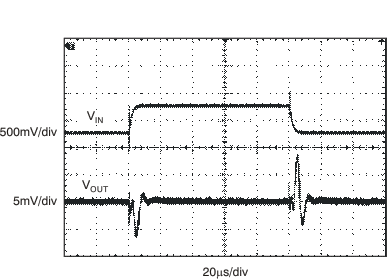
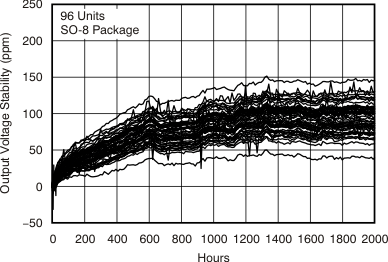
8 Detailed Description
8.1 Overview
The REF50xxA-Q1 family of devices is a low-noise, precision-bandgap voltage reference that is specifically designed for excellent initial voltage accuracy and drift. See the Functional Block Diagram section for a simplified block diagram of the REF50xxA-Q1 family of devices.
8.2 Functional Block Diagram
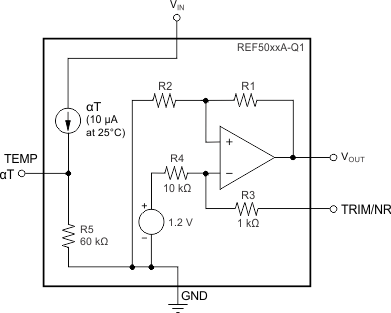
8.3 Feature Description
8.3.1 Supply Voltage
The REF50xxA-Q1 family of voltage references features extremely low dropout voltage. With the exception of the REF5020A-Q1 device, which has a minimum supply requirement of 2.7 V, these references can operate with a supply of 200 mV above the output voltage in an unloaded condition. For loaded conditions, Figure 6 in the Typical Characteristics section shows a typical dropout voltage versus load plot.
8.3.2 Using the TRIM/NR Pin
The REF50xxA-Q1 family of devices provides a very accurate voltage output. However, VOUT can be adjusted to reduce noise and shift the output voltage from the nominal value by configuring the trim and noise reduction pin (TRIM/NR, pin 5). The TRIM/NR pin provides a ±15-mV adjustment of the device bandgap, which produces a ±15-mV change on the VOUT pin. Figure 25 shows a typical circuit using the TRIM/NR pin to adjust VOUT. When using this technique, the temperature coefficients of the resistors can degrade the temperature drift at the output.
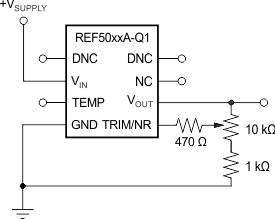 Figure 25. VOUT Adjustment Using TRIM/NR Pin
Figure 25. VOUT Adjustment Using TRIM/NR Pin
The REF50xxA-Q1 family of devices allows access to the bandgap through the TRIM/NR pin. Placing a capacitor from the TRIM/NR pin to GND (as shown in Figure 26) in combination with the internal 1-kΩ resistor creates a low-pass filter that lowers the overall noise measured on the VOUT pin. A capacitance of 1 μF is suggested for a low-pass filter with a corner frequency of 14.5 Hz. Higher capacitance results in a lower cutoff frequency.
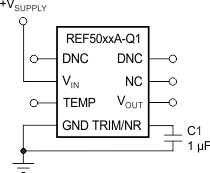 Figure 26. Noise Reduction Using TRIM/NR Pin
Figure 26. Noise Reduction Using TRIM/NR Pin
8.3.3 Temperature Drift
The REF50xxA-Q1 family of devices is designed for minimal drift error, which is defined as the change in output voltage over temperature. The drift is calculated using the box method. Use Equation 1 to calculate the drift.

The REF50xxA-Q1 family of devices features a maximum drift coefficient of 8 ppm/°C for the standard-grade.
8.3.4 Temperature Monitoring
The temperature output pin (TEMP, pin 3) provides a temperature-dependent voltage output with approximately 60-kΩ source impedance. As shown in Figure 8, the output voltage follows the nominal relationship:
This pin indicates general chip temperature, accurate to approximately ±15°C. Although this pin is not generally suitable for accurate temperature measurements, it can be used to indicate temperature changes or for temperature compensation of analog circuitry. A temperature change of 30°C corresponds to an approximate 79-mV change in voltage at the TEMP pin.
The TEMP pin has high output impedance (see the Functional Block Diagram section). Loading this pin with a low-impedance circuit induces a measurement error; however, it does not have any effect on VOUT accuracy.
To avoid errors caused by low-impedance loading, buffer the TEMP pin output with a suitable low-temperature drift op amp, such as the OPA333, OPA335, or OPA376, as shown in Figure 27.
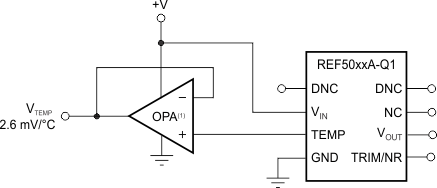
8.4 Device Functional Modes
The REF50xxA-Q1 family of devices can only operate in an on or off mode. As long as a sufficient input supply voltage is made available to device, the device performs in standard operation. The device cannot be placed in a low power or shutdown mode.
